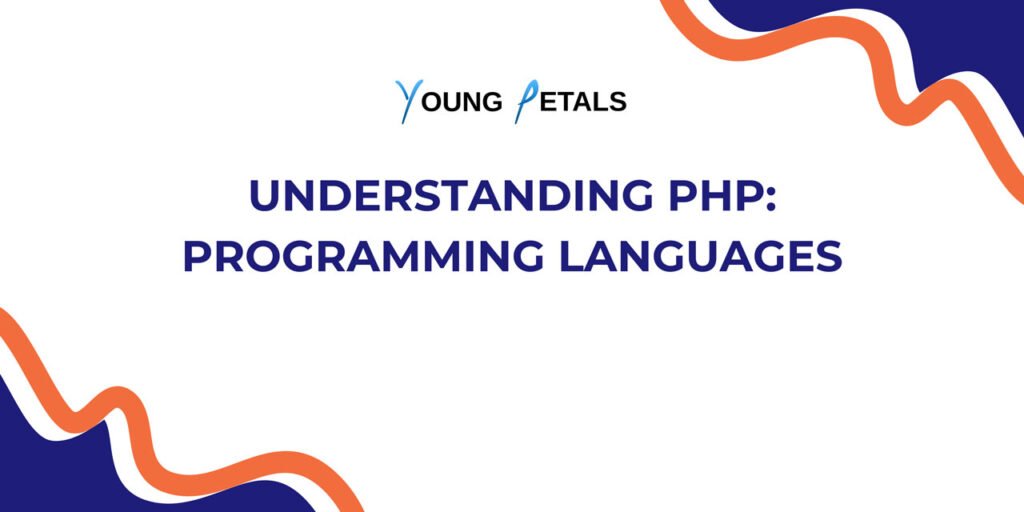When you’re working with databases in Laravel, how do you think data connects to each other? Imagine you have users, posts, and comments in your application – they’re all related, right? That’s where Eloquent relationships become your best friend.
This comprehensive guide will walk you through Laravel’s Eloquent relationships, helping you understand not just the “how” but the “why” behind each relationship type.
What Are Eloquent Relationships and Why Do They Matter?
Before we dive into code examples, let me ask you this: Have you ever found yourself writing complex SQL joins or making multiple database queries to fetch related data? Eloquent relationships solve this exact problem by defining how your models connect to each other.
Think of relationships as bridges between your database tables. Instead of manually constructing these bridges every time, Laravel gives you elegant methods to define them once and use them everywhere.
The Foundation: Understanding Model Relationships
Laravel supports several types of relationships that mirror real-world data connections:
- One-to-One – Like a user having one profile
- One-to-Many – Like a user having many posts
- Many-to-Many – Like posts having many tags
- Has One Through – Indirect one-to-one connections
- Has Many Through – Indirect one-to-many connections
- Polymorphic – When a model can belong to multiple other models
Setting Up Your Models: The Building Blocks
Let’s start with a practical example. Can you think of a blog scenario where these relationships would apply? We’ll use:
- Users (authors)
- Posts
- Comments
- Tags
- Categories
Here’s how you’d set up the basic models:
// User Model
<?php
namespace App\Models;
use Illuminate\Database\Eloquent\Model;
use Illuminate\Database\Eloquent\Relations\HasMany;
use Illuminate\Database\Eloquent\Relations\HasOne;
class User extends Model
{
protected $fillable = ['name', 'email'];
}
// Post Model
<?php
namespace App\Models;
use Illuminate\Database\Eloquent\Model;
class Post extends Model
{
protected $fillable = ['title', 'content', 'user_id', 'category_id'];
}
// Comment Model
<?php
namespace App\Models;
use Illuminate\Database\Eloquent\Model;
class Comment extends Model
{
protected $fillable = ['content', 'user_id', 'post_id'];
}
One-to-One Relationships: Perfect Pairs
When would you use a one-to-one relationship? Think about a user and their profile – each user has exactly one profile, and each profile belongs to exactly one user.
Defining One-to-One Relationships
// In User Model
public function profile(): HasOne
{
return $this->hasOne(Profile::class);
}
// In Profile Model
public function user(): BelongsTo
{
return $this->belongsTo(User::class);
}
Using One-to-One Relationships
// Create a user with a profile
$user = User::create(['name' => 'John Doe', 'email' => 'john@example.com']);
// Method 1: Create related profile
$user->profile()->create([
'bio' => 'Web developer and coffee enthusiast',
'avatar' => 'john-avatar.jpg'
]);
// Method 2: Access existing profile
$userProfile = $user->profile;
echo $userProfile->bio;
// Reverse relationship
$profile = Profile::find(1);
echo $profile->user->name; // John Doe
What do you notice about the syntax? The hasOne method establishes the relationship from the parent model, while belongsTo defines it from the child model.
One-to-Many Relationships: The Most Common Pattern
This is probably the relationship type you’ll use most often. Can you think of examples where one record relates to many others?
Setting Up One-to-Many
// In User Model - One user has many posts
public function posts(): HasMany
{
return $this->hasMany(Post::class);
}
// In Post Model - Each post belongs to one user
public function user(): BelongsTo
{
return $this->belongsTo(User::class);
}
// In Post Model - One post has many comments
public function comments(): HasMany
{
return $this->hasMany(Comment::class);
}
// In Comment Model - Each comment belongs to one post
public function post(): BelongsTo
{
return $this->belongsTo(Post::class);
}
Working with One-to-Many Relationships
// Get all posts by a user
$user = User::find(1);
$userPosts = $user->posts;
foreach ($userPosts as $post) {
echo $post->title . "\n";
}
// Create a new post for a user
$user->posts()->create([
'title' => 'My First Laravel Tutorial',
'content' => 'Laravel is amazing for web development...'
]);
// Get post with its author
$post = Post::with('user')->find(1);
echo "Written by: " . $post->user->name;
// Count related records
$postCount = $user->posts()->count();
echo "User has {$postCount} posts";
Many-to-Many Relationships: When Things Get Interesting
Here’s where it gets more complex. When might you need a many-to-many relationship? Consider posts and tags – a post can have multiple tags, and a tag can be assigned to multiple posts.
Database Structure for Many-to-Many
First, you need a pivot table. Laravel follows the convention of combining model names in alphabetical order:
// Migration for pivot table
Schema::create('post_tag', function (Blueprint $table) {
$table->id();
$table->foreignId('post_id')->constrained()->onDelete('cascade');
$table->foreignId('tag_id')->constrained()->onDelete('cascade');
$table->timestamps();
});
Defining Many-to-Many Relationships
// In Post Model
public function tags(): BelongsToMany
{
return $this->belongsToMany(Tag::class);
}
// In Tag Model
public function posts(): BelongsToMany
{
return $this->belongsToMany(Post::class);
}
Managing Many-to-Many Data
// Attach tags to a post
$post = Post::find(1);
$post->tags()->attach([1, 2, 3]); // Attach tag IDs 1, 2, 3
// Sync tags (replaces all existing tags)
$post->tags()->sync([2, 4, 5]);
// Detach specific tags
$post->tags()->detach([1, 3]);
// Access tags
$postTags = $post->tags;
foreach ($postTags as $tag) {
echo $tag->name . " ";
}
// Find posts with specific tag
$tag = Tag::find(1);
$taggedPosts = $tag->posts;
Has Many Through: Connecting the Dots
Sometimes you need to access distant relationships through intermediate models. For example, how would you get all comments from posts written by a specific user?
Setting Up Has Many Through
// In User Model - Get comments through posts
public function comments(): HasManyThrough
{
return $this->hasManyThrough(Comment::class, Post::class);
}
Using Has Many Through
// Get all comments on posts by a user
$user = User::find(1);
$userComments = $user->comments;
echo "Comments on {$user->name}'s posts:\n";
foreach ($userComments as $comment) {
echo "- " . $comment->content . "\n";
}
Polymorphic Relationships: Maximum Flexibility
What if you want to add likes to both posts and comments? This is where polymorphic relationships shine – they allow a model to belong to more than one other model type.
Setting Up Polymorphic Relationships
// Like Model
class Like extends Model
{
protected $fillable = ['user_id', 'likeable_id', 'likeable_type'];
public function likeable()
{
return $this->morphTo();
}
public function user(): BelongsTo
{
return $this->belongsTo(User::class);
}
}
// In Post Model
public function likes()
{
return $this->morphMany(Like::class, 'likeable');
}
// In Comment Model
public function likes()
{
return $this->morphMany(Like::class, 'likeable');
}
Working with Polymorphic Relationships
// Like a post
$post = Post::find(1);
$user = User::find(1);
$post->likes()->create(['user_id' => $user->id]);
// Like a comment
$comment = Comment::find(1);
$comment->likes()->create(['user_id' => $user->id]);
// Get all likes for a post
$postLikes = $post->likes()->with('user')->get();
// Check what was liked
$like = Like::find(1);
if ($like->likeable instanceof Post) {
echo "Liked post: " . $like->likeable->title;
} elseif ($like->likeable instanceof Comment) {
echo "Liked comment: " . $like->likeable->content;
}
Eager Loading: Performance Best Practices
Have you ever encountered the N+1 query problem? When you’re fetching relationships, Laravel might execute one query for the main model and then one additional query for each related model. Here’s how to solve it:
The Problem
// This creates N+1 queries!
$posts = Post::all();
foreach ($posts as $post) {
echo $post->user->name; // New query for each post!
}
The Solution: Eager Loading
// This creates only 2 queries total
$posts = Post::with('user')->get();
foreach ($posts as $post) {
echo $post->user->name; // No additional queries!
}
// Load multiple relationships
$posts = Post::with(['user', 'comments', 'tags'])->get();
// Nested eager loading
$posts = Post::with('comments.user')->get();
// Conditional eager loading
$posts = Post::with(['comments' => function ($query) {
$query->where('approved', true);
}])->get();
Advanced Relationship Techniques
Custom Foreign Keys and Local Keys
Sometimes Laravel’s conventions don’t match your database structure:
// Custom foreign key
public function posts(): HasMany
{
return $this->hasMany(Post::class, 'author_id');
}
// Custom local key
public function posts(): HasMany
{
return $this->hasMany(Post::class, 'user_id', 'custom_id');
}
Relationship Constraints
Add conditions to your relationships:
// Only published posts
public function publishedPosts(): HasMany
{
return $this->hasMany(Post::class)->where('published', true);
}
// Posts from this year
public function recentPosts(): HasMany
{
return $this->hasMany(Post::class)
->where('created_at', '>=', now()->startOfYear());
}
Counting Related Models
// Load posts with comment count
$posts = Post::withCount('comments')->get();
foreach ($posts as $post) {
echo "{$post->title} has {$post->comments_count} comments\n";
}
// Multiple counts
$users = User::withCount(['posts', 'comments'])->get();
Common Pitfalls and How to Avoid Them
1. Forgetting Mass Assignment Protection
// Wrong - might throw MassAssignmentException
$user->posts()->create($request->all());
// Right - specify fillable fields in model
protected $fillable = ['title', 'content'];
$user->posts()->create($request->validated());
2. Not Using Transactions for Related Data
// Right approach for complex operations
DB::transaction(function () use ($request) {
$post = Post::create($request->validated());
$post->tags()->sync($request->tag_ids);
$post->categories()->attach($request->category_id);
});
3. Inefficient Relationship Queries
// Inefficient
$user = User::find(1);
if ($user->posts->count() > 0) {
// This loads all posts just to count them
}
// Efficient
$user = User::find(1);
if ($user->posts()->exists()) {
// This only checks existence
}
Testing Your Relationships
How do you verify that your relationships work correctly? Here are some testing patterns:
// Test relationship existence
public function test_user_can_have_many_posts()
{
$user = User::factory()->create();
$posts = Post::factory(3)->create(['user_id' => $user->id]);
$this->assertCount(3, $user->posts);
}
// Test relationship creation
public function test_user_can_create_post()
{
$user = User::factory()->create();
$post = $user->posts()->create([
'title' => 'Test Post',
'content' => 'Test content'
]);
$this->assertInstanceOf(Post::class, $post);
$this->assertEquals($user->id, $post->user_id);
}
Conclusion: Building Robust Data Relationships
Eloquent relationships are the backbone of efficient Laravel applications. They help you:
- Write cleaner code by eliminating complex SQL joins
- Improve performance through eager loading
- Maintain data integrity with proper foreign key constraints
- Create flexible architectures with polymorphic relationships
Key Takeaways
- Choose the right relationship type based on your data structure
- Always use eager loading to prevent N+1 query problems
- Define inverse relationships for bidirectional access
- Use meaningful method names for custom relationships
- Test your relationships to ensure they work as expected
Next Steps for Your Learning Journey
Now that you understand the fundamentals, what specific relationship scenario are you most excited to implement in your next project? Are you dealing with a complex many-to-many situation, or do you need to set up polymorphic relationships?
Remember, mastering Eloquent relationships is like learning to speak Laravel fluently. The more you practice these patterns, the more natural they’ll become in your development workflow.
What relationship challenges are you currently facing in your Laravel projects? Feel free to experiment with the code examples above and adapt them to your specific use cases!




